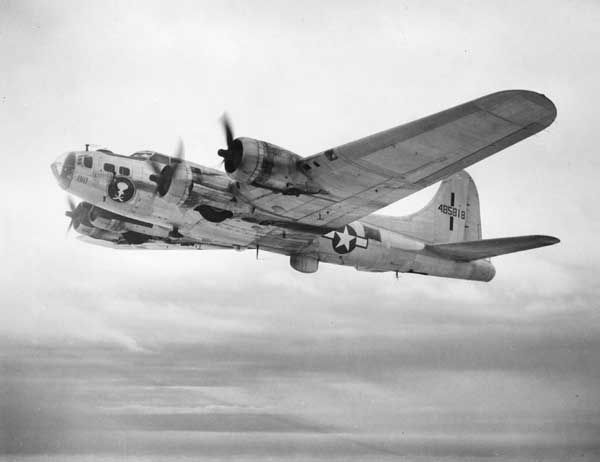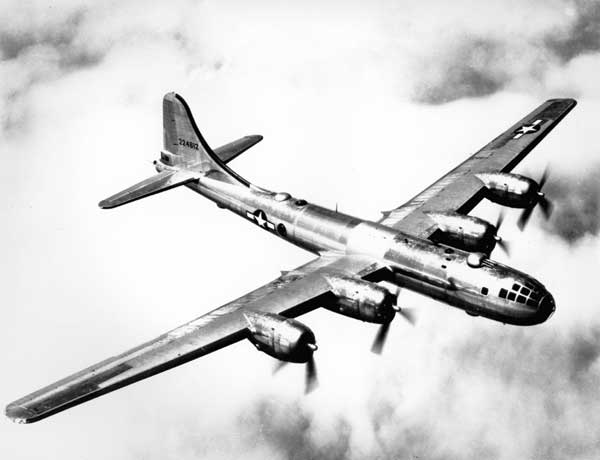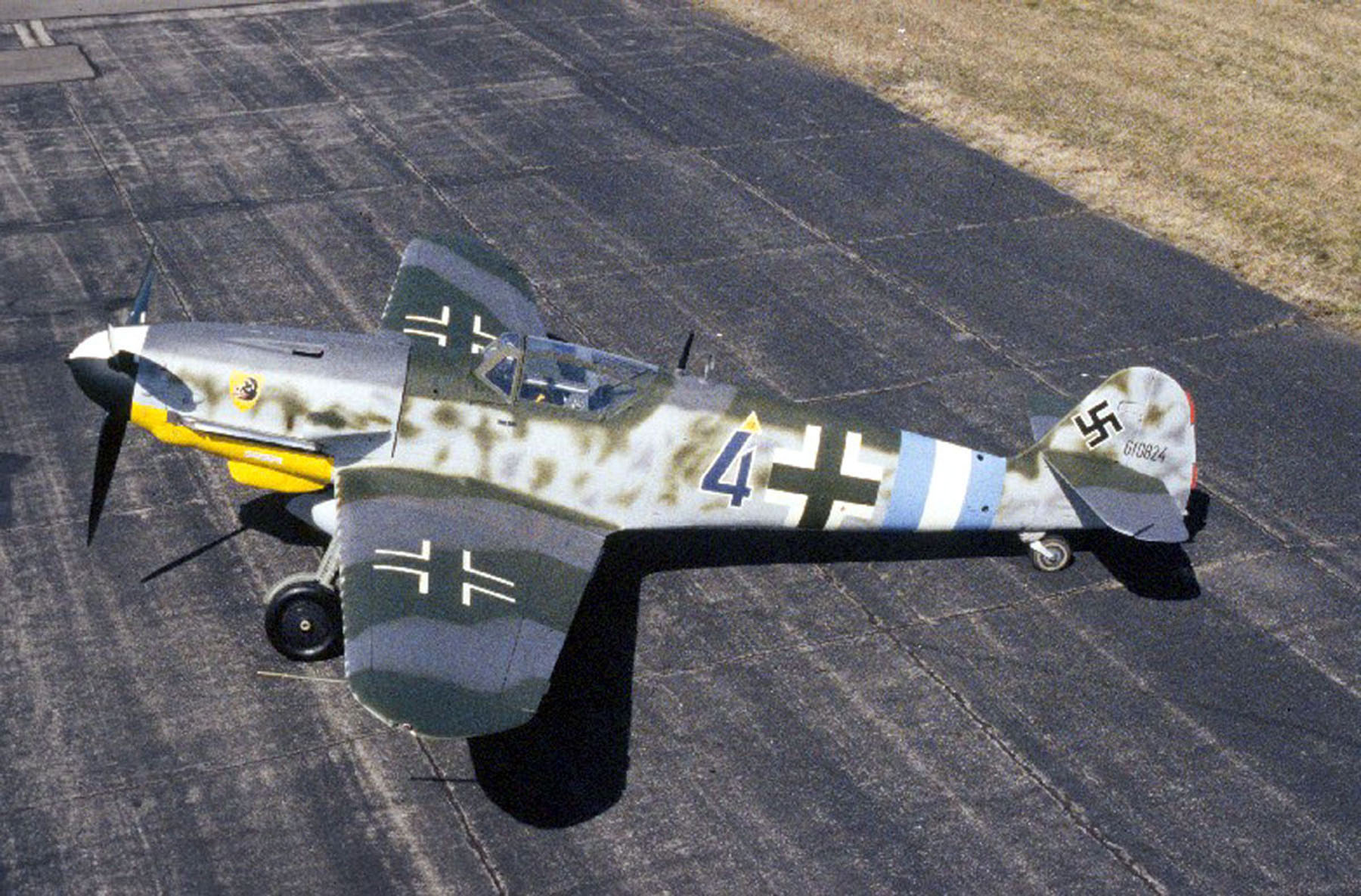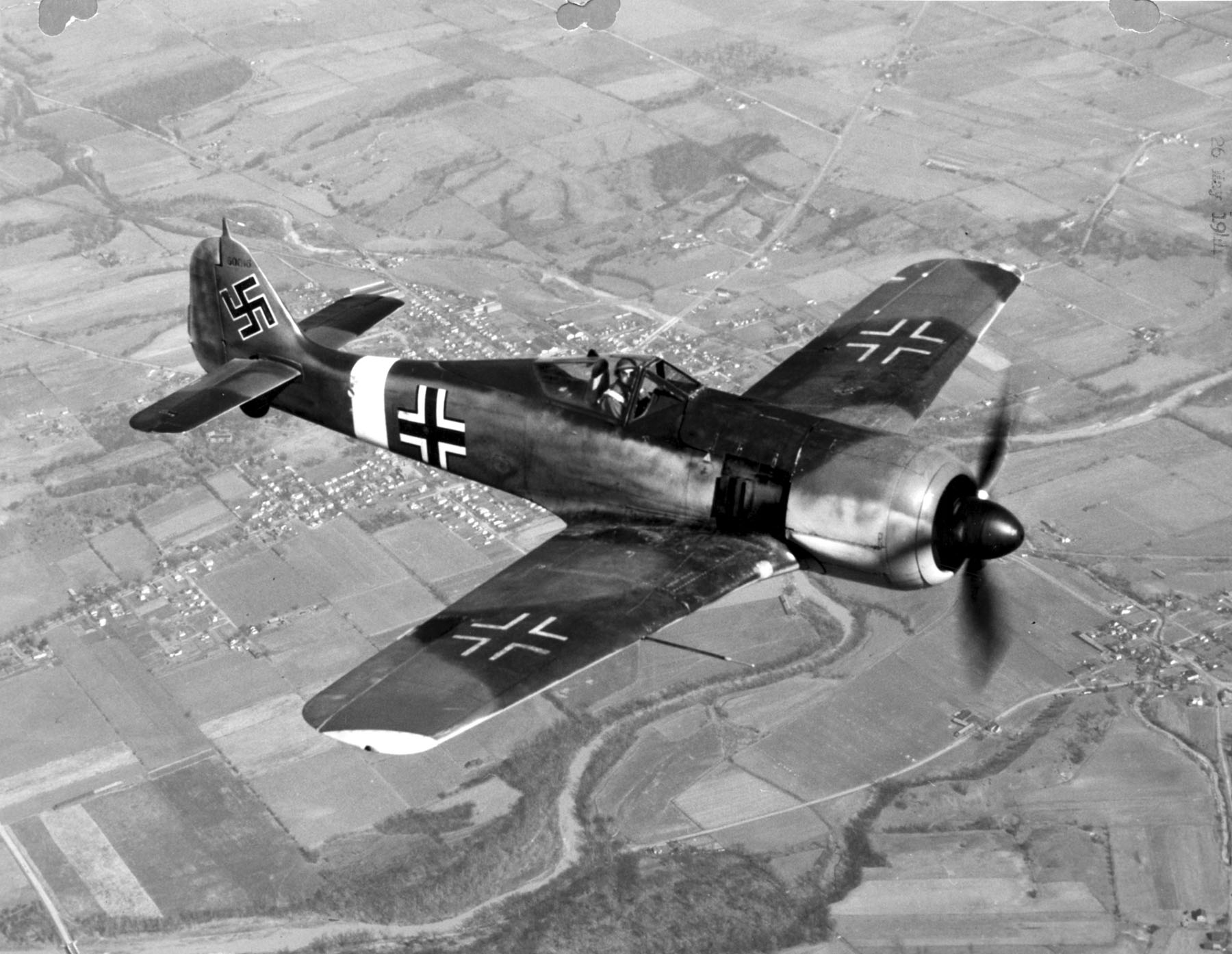

The twin-boomed P-38 and B-17 Flying Fortress. The heavily-armed and durable P-38 Lightning saw extensive action in the Pacific Theater of Operations and played a key role in softening up the German defensive positions after the D-Day invasion.


The twin-boomed P-38 and B-17 Flying Fortress. The heavily-armed and durable
P-38 Lightning saw extensive action in the Pacific Theater of Operations
and played a key role in softening up the German defensive positions after
the D-Day invasion.
It was a squadron of P-38's that intercepted and shot down Admiral Yamamoto's transport over the Pacific ocean. In addition, America's leading ace, Richard Bong, flew a P-38.
The B-17 Flying Fortress was used to bomb the Germans during the day while
British Lancasters, Halifaxes, and other heavy British bombers attacked by
night. The bulk of the B-17's were stationed in England under the command
of the U.S. Eighth Air Force. The most famous B-17 was the "Memphis Belle,"
whose crew survived their complete tour of duty (25 missions). Before long-range
fighter escorts were developed to follow the "heavy babies" into the heart
of the Reich, the American aircrews suffered staggering losses to German
pilots and flak batteries.


The B-29 Superfortress and the P-51 Mustang. The B-29 Superfortress was America's
next-generation bomber after the B-17. It had a longer range than the B-17
and could operate at higher altitudes. The B-29 "Enola Gay" dropped the atomic
bombs on Hiroshima and Nagasaki.
The P-51 was said to be the best all-around fighter of the Second World War. Its introduction to the German front in 1943 helped the Allies gain, if not air superiority, at least air equality in the skies over Europe. The P-51 could carry "drop" fuel tanks which extended its range and which in turn enabled the Allied bombers to have fighter escort all the way to and from the target.
American Ace Chuck Yeager flew the P-51. His airplane, "Glamorous Glen,"
is on display at the Smithsonian Air & Space Museum in Washington, D.C.



The Bf-109/Me-109 'Emil' and Focke Wulf 190 (FW-190). Although the FW-190
was superior to the Bf-109, the Bf-109 was produced in higher numbers than
any other German plane during the war and was piloted by such aces as Adolf
Galland and Heinz Knocke.


The Komet rocket plane and Me-262 Stormbird. Simultaneously, the Germans
had introduced the world to the first rocket-propulsed fighter and the first
jet fighter.
 Click to send me e-mail at
rdfgoalie@gmail.com
Click to send me e-mail at
rdfgoalie@gmail.com